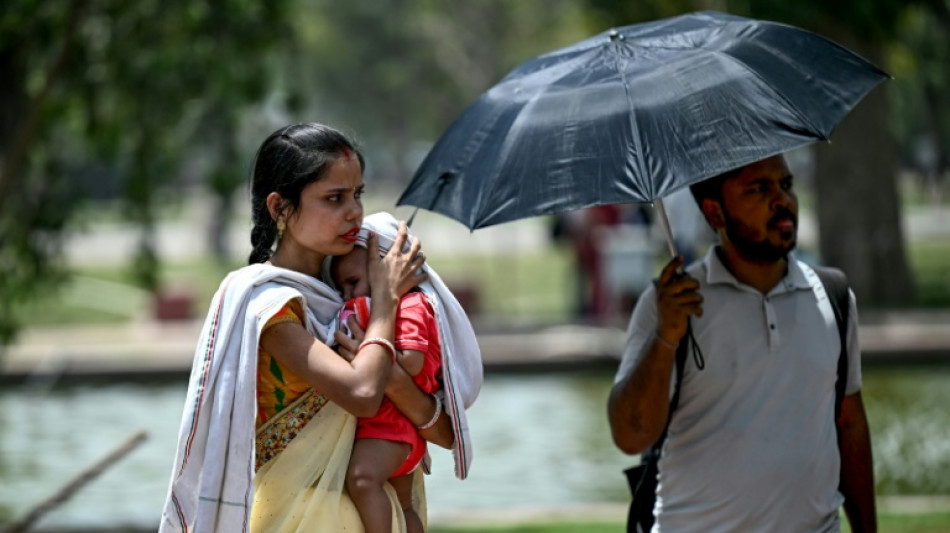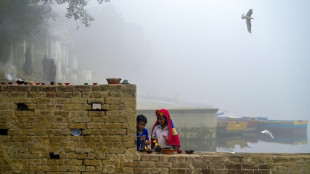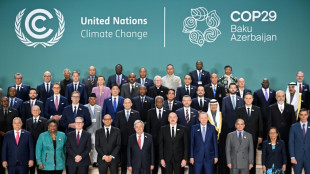

Indian capital records highest temperature of 49.9 Celsius
Temperatures in India's capital have soared to a record-high 49.9 degrees Celsius (121.8 degrees Fahrenheit) as authorities warn of water shortages in the sprawling mega-city.
The India Meteorological Department (IMD), which reported "severe heat-wave conditions", recorded the temperatures on Tuesday at two Delhi suburb stations in Narela and Mungeshpur.
The weather bureau said the temperatures were nine degrees higher than expected, breaking a previous 2022 record for the city of 49.2C (120.6F).
Forecasters predicted similar temperatures Wednesday for the city, which has an estimated population of more than 30 million people, issuing a red alert health notice.
The alert warns there is a "very high likelihood of developing heat illness and heat stroke in all ages", with "extreme care needed for vulnerable people".
India is no stranger to searing summer temperatures but years of scientific research have found climate change is causing heatwaves to become longer, more frequent and more intense.
- 'Waiting for the monsoon' -
People on the streets of Delhi said there was little they could to do avoid the heat.
"Everyone wants to stay indoors," said snack-seller Roop Ram, 57, adding he struggled to sell his savoury fritters.
Ram, who lives with his wife and two sons in a cramped house, said they had a small fan but that did little to cool them down.
They were counting down until the rainy season arrives in July.
"I am not sure what else we can do to cope," he said. "We are just waiting for the monsoon."
Rani, 60, who uses only one name, travels by bus for two hours each morning to sell jewellery to tourists at a makeshift street stall.
"It is definitely hotter, but there is nothing we can do about it," she said, gulping water from a bottle she brought from home. "I try to refill the bottle from anyone around."
Heat remains high even at night, the IMD said, noting that the temperatures were "likely to reduce gradually" from Thursday.
- 'Water scarcity' -
New Delhi authorities have also warned of the risk of water shortages as the capital swelters in headache-inducing heat, cutting supplies to some areas.
Delhi Water Minister Atishi Marlena has called for "collective responsibility" to stop wasteful water use, the Times of India newspaper reported Wednesday.
"To address the problem of water scarcity, we have taken a slew of measures such as reducing water supply from twice a day to once a day in many areas," Atishi said, according to the Indian Express.
"The water thus saved will be rationed and supplied to the water-deficient areas where supply lasts only 15 to 20 minutes a day," she said.
The highly polluted Yamuna river, a tributary of the Ganges, runs through Delhi but its flow is hugely reduced during the summer months.
Delhi relies almost entirely on water from neighbouring Haryana and Uttar Pradesh, both farming states with huge water demands.
- Cyclone kills 65 -
Many blame the soaring temperatures on scorching winds from Rajasthan state, where temperatures on Tuesday were the hottest in the country at 50.5C (122.9F).
Rajasthan's desert region of Phalodi holds India's all-time heat record of 51C (123.8F) hit in 2016.
Neighbouring Pakistan has also sweltered through a week-long heatwave, which peaked at 53C (127.4F) on Sunday in Mohenjo Daro in rural Sindh province.
Pakistan's meteorological office said it expected temperatures to subside from Wednesday but warned further heatwaves were coming in June.
It comes as Pakistan hashes out a new deal with the International Monetary Fund that is believed to focus heavily on an energy supply crisis that has left parts of the country facing up to 15 hours of load-shedding a day.
At the same time, India's West Bengal state and the northeastern state of Mizoram are recovering after a cyclone hit India and Bangladesh on Sunday, killing at least 65 people.
Bangladesh's Meteorological Department said the cyclone was "one of longest in the country's history", blaming climate change for the shift.
burs-bb-pjm/pbt
G.Alamilla--ESF




